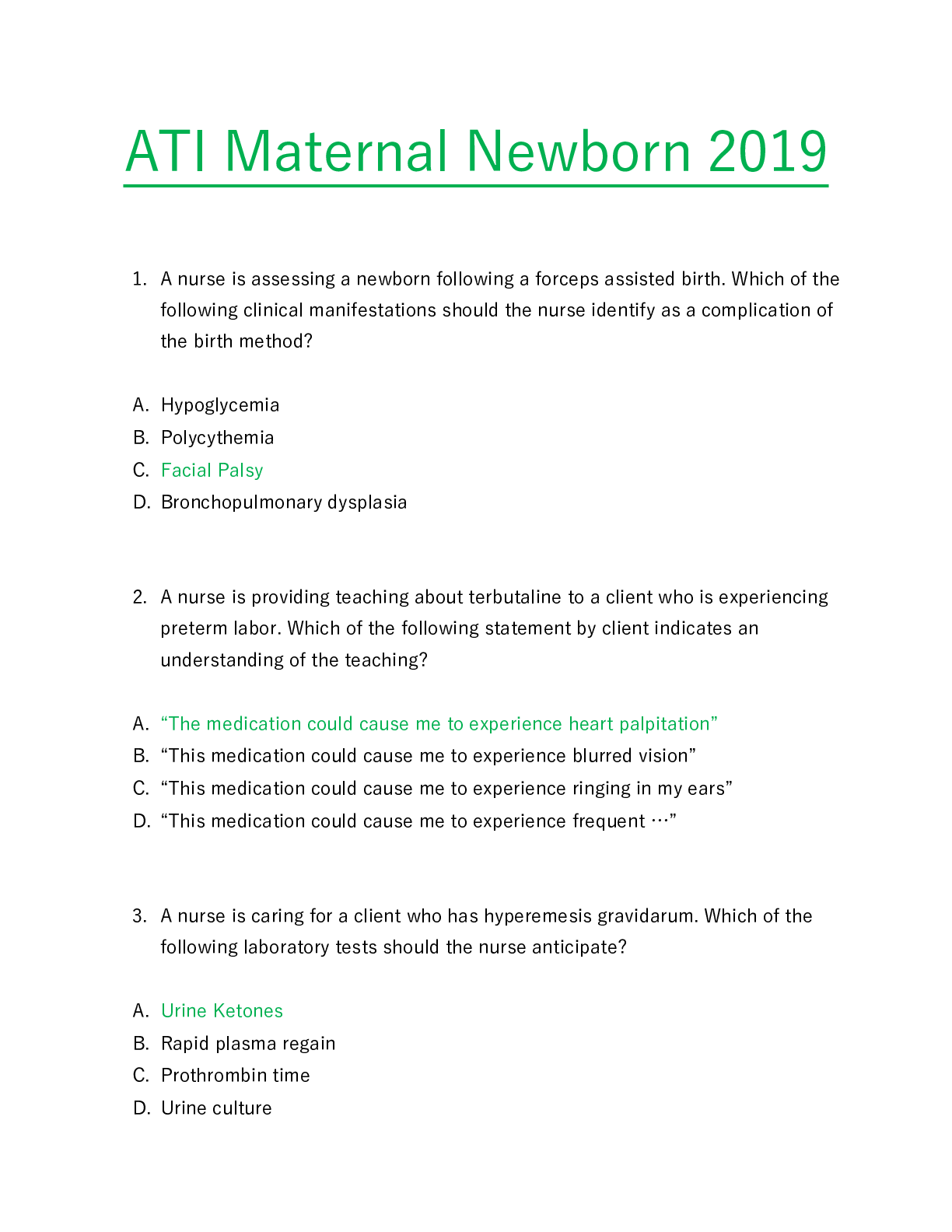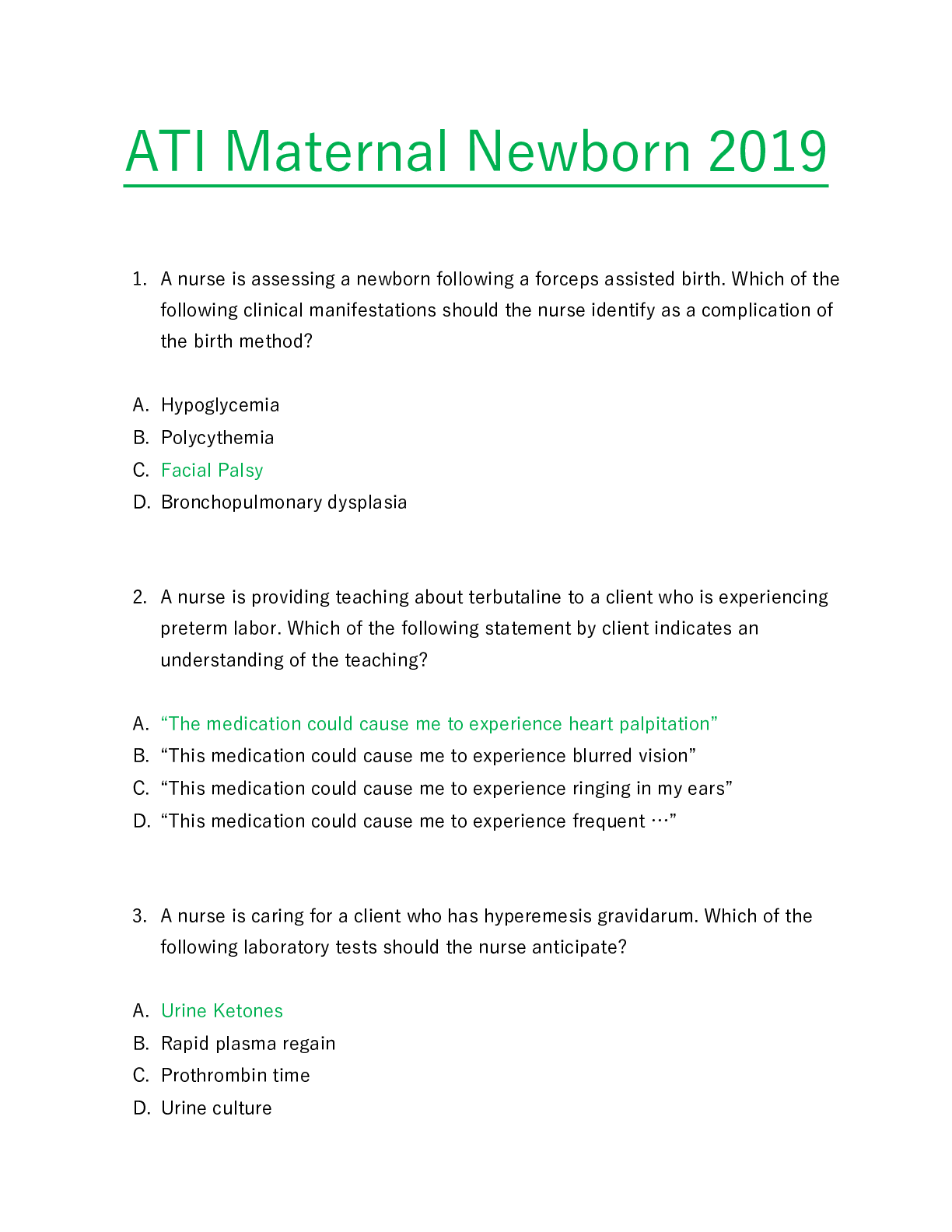ATI MATERNAL NEWBORN PROCTORED EXAM 2019
Course
Project Management
Subject
Chemistry
Category
Questions and Answers
Pages
23
Uploaded By
ATIPROS
Preview 5 out of 23 Pages


Download all 23 pages for $ 8.84
Reviews (0)
$8.84
